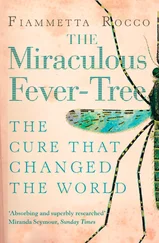Josh Brown, at the tender age of 12, with his heart-warming entreaty not to pay him back for his good deed but to pay it forward instead, really captured the essence of what paying it forward is all about.
The idea of paying it forward builds on the acts of kindness or ‘good deeds’ that we, as a civilised society, are encouraged to perform for others. Traditionally, however, we are more accustomed to ‘paying back’ than ‘paying forward’; paying back is when we do something nice for someone in return for them having already done something for us. So because my friend picks up my kids from school on Monday when I’m working late, I pay her back by collecting her kids for her on Thursday when she can’t get there in time. We are all very familiar with ‘paying it back’, and indeed society runs very well on this established system of reciprocity. You scratch my back and I’ll scratch yours; we’ve all done it, and many of us rely on this reciprocal favour-giving to cope with the various demands on our time and resources.
‘Paying it forward’ (PIF) is different. Instead of paying back, the idea here is that we pay forward so that we don’t return the favour to the person who donated it, but ‘pay it forward’ to an entirely different person. So, in theory, instead of picking up my friend’s kids as a thank-you for helping me out with mine (paying it back), I would instead pay it forward by doing the return favour for someone else. That person, too, is encouraged to pay it forward by doing something nice for another person, and thus acts of kindness are spread around. Kindness begets kindness, and so a kindness domino effect is begun.
The essence of the pay-it-forward concept (referred to by some as ‘upstream reciprocity’) then is that we perform acts of kindness for complete strangers rather than for people we know. This way, the recipients of our good deeds can’t pay us back. They can only satisfy the psychological demand for reciprocity (more on this later …) that our good deed creates by paying it forward to someone else. Of course, they are under no obligation to pay it forward to a complete stranger in the true spirit of the PIF ideology (they could choose to pay it forward to a friend instead, or, of course, not pay it forward at all), but it is hoped that the many and growing organisations that now exist around the world to promote the concept of paying it forward (see Chapter 8) will be able to spread the message so that recipients of random acts of kindness know exactly what they are meant to do! This is also the aim of this book: to spread the word and the ideology of PIF so that random acts of kindness and good deeds spread like a virulent (but benign) virus across the globe.
The origins of paying it forward
The origins of the term are not entirely clear, but it may have been coined by Lily Hardy Hammond in her 1916 book In the Garden of Delight :
I never repaid Great-Aunt Letitia’s love to her, any more than she repaid her mother’s. You don’t pay love back; you pay it forward .
However, the concept of passing on acts of kindness far precedes the actual term ‘pay it forward’. One of the earliest recorded references to the idea was made by Benjamin Franklin, in a letter to one Benjamin Webb, dated 25 April 1784:
I do not pretend to give such a deed; I only lend it to you. When you […] meet with another honest Man in similar Distress, you must pay me by lending this Sum to him.
Franklin suggests that recipients of a good deed receive a debt, which they then feel obliged to ‘discharge’. This is similar to the idea of psychological reciprocity, which will be discussed in more detail later.
The next reference to the concept takes almost 60 years to make an appearance when, in 1841, Ralph Waldo Emerson, an American lecturer and poet, wrote in an essay entitled ‘Compensation’:
In the order of nature we cannot render benefits to those from whom we receive them, or only seldom. But the benefit we receive must be rendered again, line for line, deed for deed, cent for cent, to somebody.
Here, Emerson believes that it is the law of ‘nature’ that even though we can’t always return favours (or pay back) we must still be obliged to pay the favour on to ‘somebody’.
Caffè sospeso is a tradition in the working-class cafés of Naples where a person who has experienced good luck financially pays for two coffees, but receives and consumes only one, the second being left until a person enquires later whether a sospeso is available.
It wasn’t until the 1940s that the concept (if not the terminology) of paying it forward really started to take off, with the ‘Heifer Project’, a global non-profit organisation set up by a farmer, Dan West, which aimed to end poverty and hunger in a sustainable way. The idea was that by giving gifts of livestock (heifer cows), seeds and trees to those in need, the gift could be passed on to others. Each family benefiting from the original donations was obliged to then give some of their own produce (new calves, trees, etc.) from the gift to another family in need. This family, too, would in time donate some of the produce borne of their gift to another family. In this way, the single gift could multiply into a far-reaching wave of giving. Heifer International, as it is now known, thus works to ensure that the gift of each animal will eventually help an entire community to become self-sustaining, and in this way it aims to eradicate hunger and poverty ( www.heifer.org/).
The term ‘pay it forward’ gained further popularity in 1951 when Robert A. Heinlein, an American science-fiction writer who died in 1988, wrote in his book Between Planets of a gift of money given to a hungry recipient, Don. When Don assures the donor that he will pay it back, he is urged instead to pay it forward ‘to some other brother who needs it’ .
Heinlein’s widow took the concept of paying it forward further after his death by founding The Heinlein Society in order to ‘pay forward’ the legacy of the writer to future generations. The foundation has programmes to promote blood drives, supply educational materials, offer scholarships and provide his books to military heroes, among other things ( www.heinleinsociety.org/).
In 1957, the concept of paying it forward appeared in another book – this time a novel entitled Dandelion Wine by Ray Bradbury, in which the main protagonist wonders how to thank a Mr Jonas for saving his life: ‘You just can’t pay. What then? What? Pass it on somehow, he thought, pass it on to someone else. Keep the chain moving.’
It is not, however, until the turn of the twenty-first century that the concept and term ‘pay it forward’ really entered the modern lexicon with the publication of a book in 1999 by Catherine Ryan Hyde bearing the title Pay It Forward . Apparently, the idea for the novel came when Catherine’s car caught fire in what she described as the ‘bad neighbourhood’ in which she lived, and two total strangers came to her assistance, but then left before she could even thank them. The novel revolves around the obligation to do three good deeds for others in response to a good deed that one receives. In this way, the practice of helping one another would be spread throughout the world, with the overall impact of making it a better place.
The novel has been translated into 20 languages for publication in more than 30 countries, and was chosen among the Best Books for Young Adults in 2001 by the American Library. In 2000 a movie based on the book, starring Kevin Spacey, Helen Hunt and Haley Joel Osment, was released by Warner Brothers.
Paying it forward as an evolutionary process
Читать дальше











